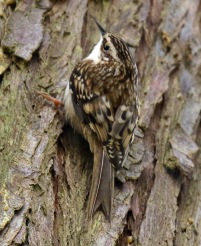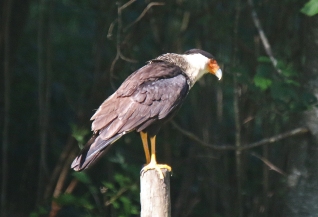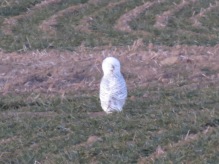The Bird and Memory of the Week this week is the tiny Black Rail, Laterallus jamaicensis. It is the smallest American Rail measuring barely 6 inches and weighing just over 1 ounce. It actually looks even smaller or at least that is how I remember it. It is a very secretive bird that is rarely seen even when present. I was very lucky.
I expect all birders are asked the question: “So what got you started in birding?” Although it was not the first bird I saw as a beginner, the experience that I think really got me going as a “birder” was seeing a Black Rail at an extremely high tide at the Dumbarton Bridge/Dumbarton Point in Alameda County on November 22, 1972. At the time I was in law school at Stanford and my actual and honest answer to that getting started question is that I found I enjoyed birds more than law school lectures so the interest developed that way, but the Black Rail punctuated the interest.
![BlackRail[1]](https://blairbirding.files.wordpress.com/2016/03/blackrail1.jpg?w=353&h=279)

I have never seen or heard a Black Rail anywhere again. There are many Ebird records from the San Francisco Bay area from the 43+ years following my observation – BUT reading through many of them, most if not all are “heard only” so the actual sighting in 1972 was special indeed. There was great anticipation from the gathered throng as the water level continued to rise and finally this little black bird climbed onto the disappearing island and eventually was all alone on the grassy tuft that was hardly much bigger than it was. Shrieks of joy were actually heard.
As with most of these blog posts, the bird memory that is the main subject also reminds me of other experiences. One was being fortunate to actually see a Yellow Rail at Anahuac National Wildlife Refuge in 1978 when the rail buggy was still in operation. So I have seen all of the regular North American Rails, but the Black Rail will always be the most special. The Yellow Rail was part of the Eastern Airlines whirlwind described in a previous blog post. I know there were other great birds seen at the Refuge but the only record I have is for a Sedge Wren – the only time I have ever seen one was with the Yellow Rail.


Another favorite Rail memory is seeing a Sora at the Montlake Fill. I was sitting with Connie Sidles enjoying her endless stories of Birds of the Fill and a Sora emerged out of the grass reeds and walked across the path not more than 15 feet from us. We were stunned. No time for a photo but fortunately I was able to get a Sora photo last year at Wylie Slough on September 6th when I also got a good shot of a Virginia Rail – one of at least 6 heard or seen at the Slough that day.


What stirred the memory of the Black Rail was being at the Montlake Fill this morning and hearing at least 4 Virginia Rails and seeing at least 3 at different spots around the Fill. It brought to mind the other Virginia Rail sightings and that there have been many more really good looks this year than I can ever remember including incredible photo ops at the Edmonds Marsh and Pitship Pocket Estuary near Sequim.


I have not yet seen or heard a Sora this year but have hopes for one soon. And someday I hope to see a Black Rail again. The first one would have made for a great photo – but that was way before I could afford a camera and way before the era of digital photography – so an opportunity lost. But the picture remains in my head – and it is a VERY GOOD ONE!!

























































![IMG_20160305_130609004~3[1]](https://blairbirding.files.wordpress.com/2016/03/img_20160305_13060900431.jpg?w=408&h=229)




